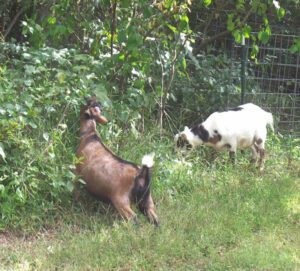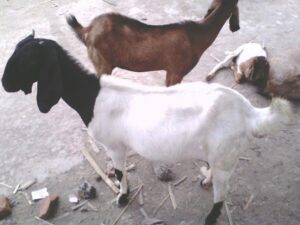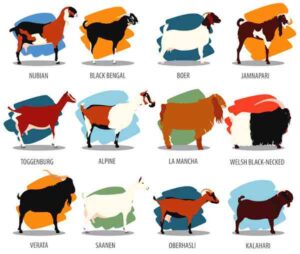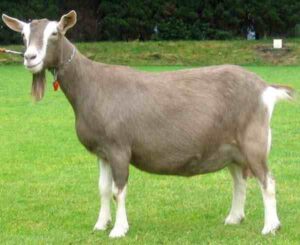The Cashmere goat is not any specific breed of goat. Rather, any breed of goat that produces cashmere wool, is a Cashmere goat. The word Cashmere is an old spelling of Kashmir, India. These goats are the producers of fine quality cashmere wool.
Cashmere wool is defined by the high quality and softness of the fiber found in the region of Kashmir. And the Cashmere goats are raised for this cashmere wool (the goat’s fine, soft, downy, winter undercoat).
The undercoat of this goat grows as the day shortens and is associated with an outer coat of coarse hair. Coarse hair is present in this type of goats all the year and is called guard hair. Most common goat breeds grow this two-coated fleece, including the dairy goats.
The fiber of the Cashmere goat is so luxurious that the Arc of the Covenant of the old testament was lined and curtained with it. About 60 percent of the worlds supply of cashmere is produced in China.
And the remainder from Turkey, Afghanistan, Iraq, Iran, Kashmir, Australia and New Zealand (according to the Oklahoma State University’s Department of Animal Science).
Today there are many breeds of goat available which produce fine quality cashmere wool. And Cashmere goats are available throughout the world. The cashmere goat is a fiber goat along with the Pygora goat, Nigora goat, and the Angora goat. Read more information below.
Cashmere Goat Characteristics
Size and weight of Cashmere goat vary depending on the breed. Coat color and many other physical characteristics also different depending on the type of goat. But one common thing is that ‘most of these breeds produce fine quality fiber or wool’.
And most of the cashmere producing goat breeds have horns. Some cashmere producing goat breeds are; Alashanzuoqi White, Australian, Changthangi, Hexi, Inner Mongolia, Liaoning, Licheng Daqing, Luliang Black, Tibetan Plateau, Wuzhumuqin, Zhongwei etc. Photo from Wikipedia.
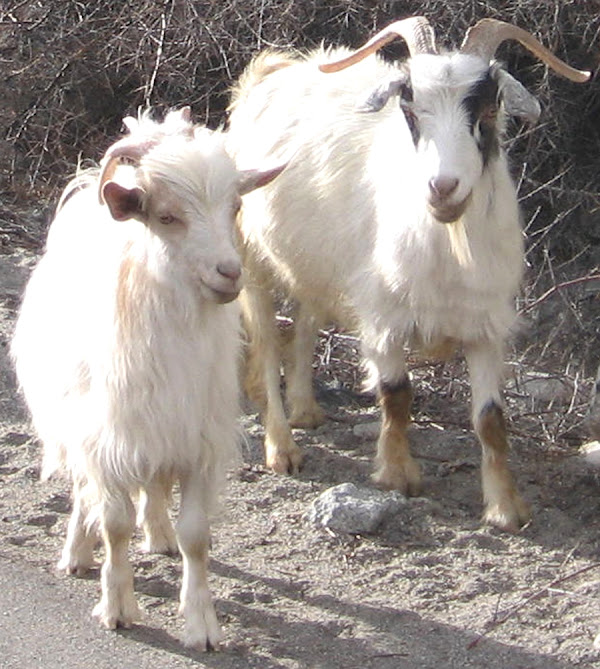
Uses
Cashmere goats are primarily used for fiber or cashmere wool production. Some Cashmere goats are also suitable for meat, milk or skin production.
Special Considerations
Most of the Cashmere goats are easy to raise. They require minimal care and are usually healthy animals. But they require regular grooming. Most of them are not jumpers like many other domestic goat breeds.
Usually they are sheared once a year and a fully grown buck will produce from a several grams to up to 1 kg of fleece. And their fleece consists of two kinds of fiber, which are cashmere and guard hair.
Depending on the breed, average cashmere percentages are in the 20 percent range. The cashmere producers can either sell the fleece to wholesale buyers or at retail prices to hand spinners. Review full profile of this breed below.
| Name | Cashmere |
| Other Name | None |
| Purpose | Cashmere, Fiber |
| Size | Small-Medium |
| Weight | Depends on the breed |
| Horns | Depends on the breed, but most breeds have horns. |
| Climate Tolerance | All Climates |
| Coat Color | Many, depends on the breed |
| Good for Stall Fed | Not sure |
| Rarity | Common |
| Country/Place of Origin | Depends on the breed |

